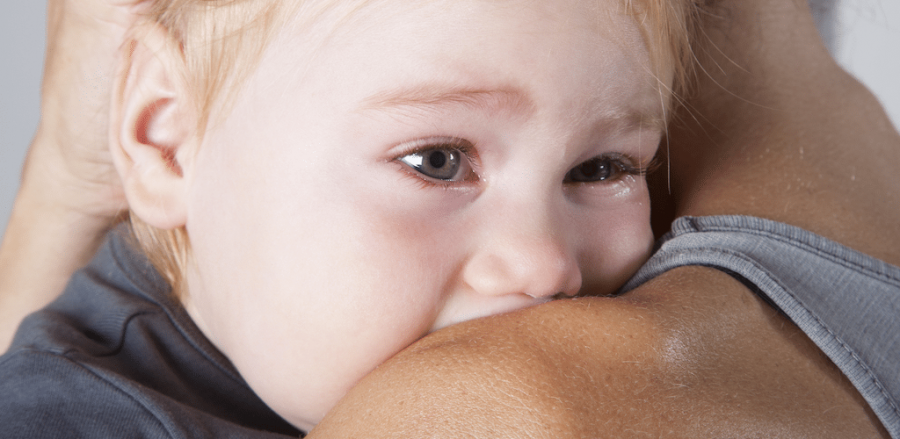You finally return to work after a lengthy maternity leave. You try to be super organised: you get a place at the daycare centre near your house, and coordinate your child’s daily drop off and pick up with your hubby. Then something unplanned hits you like a ton of bricks: your child’s first winter season at daycare.
#1 The long list of common illnesses in children:
First, there is a break out of Hand, Foot, and Mouth Disease. It’s a mild viral illness accompanied by blistery spots on the hands, feet and in the mouth. It may be accompanied with low-grade fever, cough, poor eating due to sore throat and crankiness. It usually lasts for 7-10 days. Whilst your child may feel well enough most of the day to attend daycare, it is contagious so the child has to stay at home the whole week.
Then, there is a breakout of ‘gastro’, where you child is vomiting for around 24 hours and it is often accompanied by diarrhea. This is extremely contagious and again your child has to be at home whilst having symptoms, as well as 48h after the vomiting and/ diarrhea stops.
Then, there are variety of colds, causing non-stop runny noses, coughs, sore throats, and at times even post-viral lactose intolerance in kids.
As a bonus, your child may have an eye conjunctivitis. This is a pink eye that may be viral or bacterial. If it is bacterial the eye will be sticky in the morning and you may use antibacterial drops. For the viral type there is no treatment just soothing measures such as cool saline water wipe. Again it is contagious and your child has to stay at home until it clears.
#2 Sick children and what is normal:
Before becoming a parent myself, I never imagined how much time is devoted to taking care of sick children. There is nothing you can do to plan for it, and unless you isolate your child, it is hard to prevent. If your child is under 3 or 4 years old and they attend daycare centre, with 12 or more children in the group, they will fall ill around 10 to 12 times every winter season. If they are attending family care, with only 4 kids in the group, it may be less.
#3 We are working parents how do we manage this?
If you are not a stay at home parent, you can’t afford a nanny and you don’t have retired or an unemployed relative to help you out, you and your partner have to make arrangements at work to take days off in turn. If you have an understanding employer who is tolerating your frequent absences, you are lucky. In most cases, your co-workers are likely to be talking behind your back about your lack of productivity. Unfortunately, this is common because if you haven’t been though this yourself, it is hard to comprehend that one kid could be sick so frequently.
Bottom line: brace yourself, as this time can be stressful.
# 4 Attending daycare or not – you still have to pay:
Then you have another blow: Whether your child attends childcare or not, you still pay. This is how daycare system works and there is nothing you can do about it.
#5 With sick children some rules need to be modified:
Being a conscientious parent you have one-hour a day screen-time limit for your toddler. Now imagine this, half way into the week entertaining your sick toddler at home: it’s been raining and you cannot go outside, you have done all the art activities, you have read all the books and played all the games. You may want to consider bending the rules a little with screen-time entertainment and give yourself a break.
#5 I can work from home and stay with my sick child:
Whilst being able to work from home may seem like a good arrangement at first, it isn’t. Your employer will expect the same amount of work to be completed from home with a sick child as working at home on a normal day. Say goodbye to your sleep, since you will have to complete most of your work during your child’s naps and in the evenings.
#6 Medication administration to a sick child:
There is another skill you need to master: administering medication to your child. Whether it’s paracetamol, ibuprofen or antibiotics the child needs it, but they don’t like to take it. If your kid is good with taking medications you are very lucky. In most cases, the child will kick, scream and cry, whilst you attempt to pin them down and inject the medication in small amounts into their mouth. You wait for the swallow and repeat again until the full dose is in. Word of advice, try to avoid doing it in front of strangers.
#7 When does the child require antibiotics:
Most kid’s illnesses are viral and only 10% are bacterial and require antibitiotics. So for most cases where your child is suffering with fever, sore throat, congestion and coughing, the only thing you can do is make him/her comfortable with symptomatic treatment and give it time. Whilst viral and bacterial symptoms do overlap, the latter is often more severe. So if the illness is not improving after 3 or 4 days it is worth taking your child to the GP who will perform diagnostic tests to see if there is a secondary bacterial infection.
Image credit: dollarphotoclub.com
Article from: www.fertilitypharmacy.com.au
